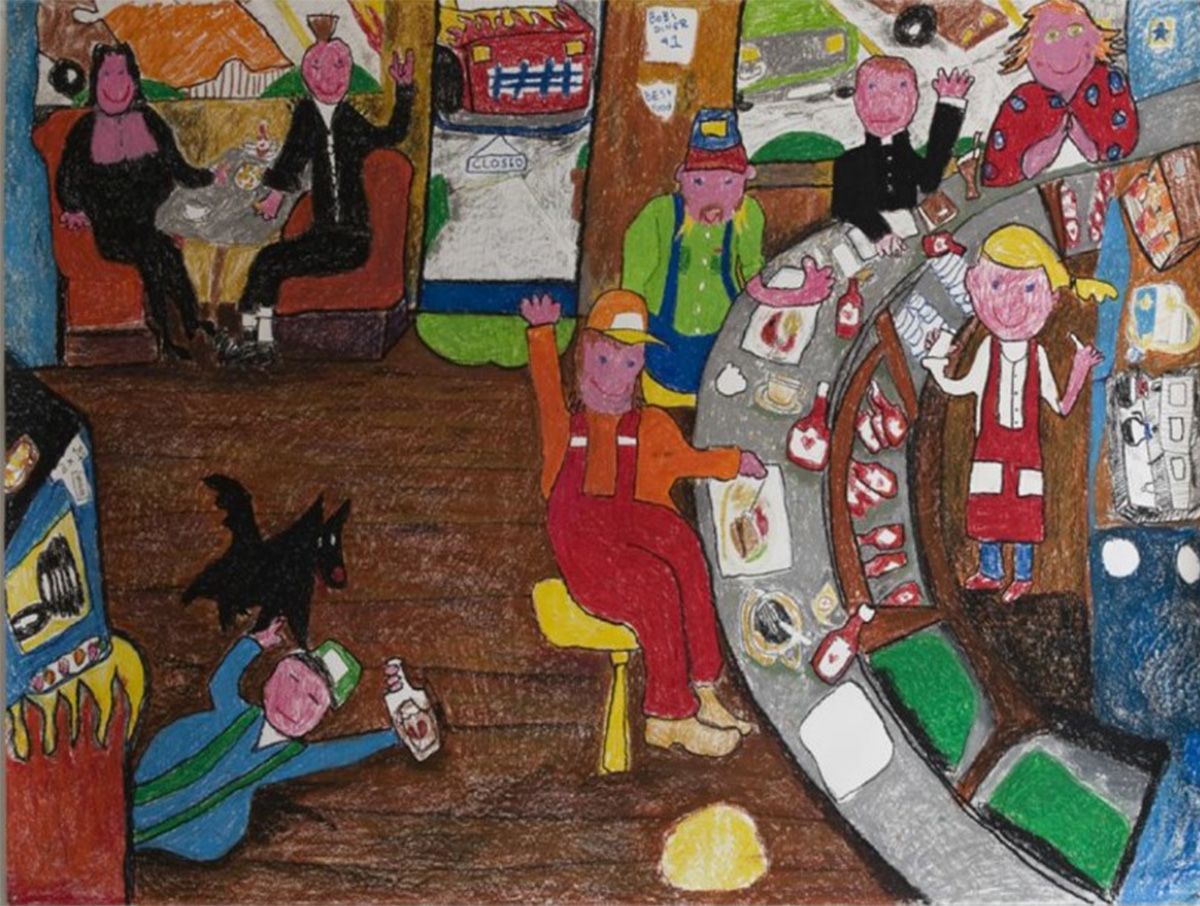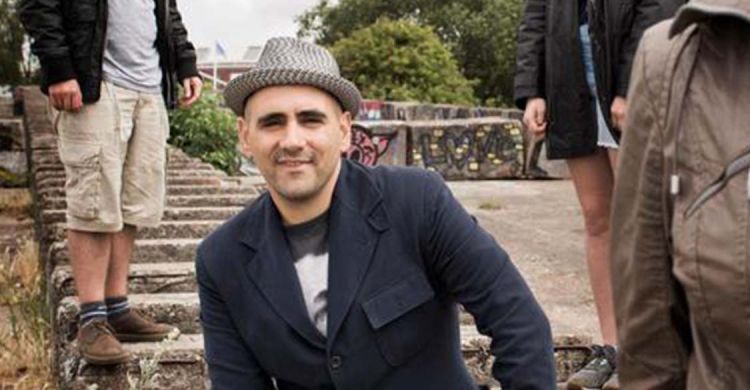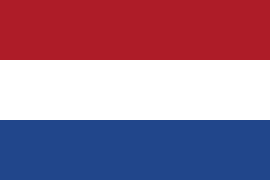

Abner Preis
Bob's Diner

People artist
An Israeli-American artist and storyteller, Abner works in many different ways and produces art of every kind and description, from drawings, performances and installations to video works and photographs. When Abner started out as an artist, he mainly painted; however, he now paints much less frequently. In recent years, Abner has created a lot of art that involves other people, who become part of the art. He works with different groups in society. Although he still tells stories, just as he did in his earlier work, Abner now does it with people.
Say cheese!
In this work, it is as though everyone is smiling and waving at the camera. It's like a school photo, when the entire class is asked to look as happy as possible.
Your little sister
This work of art seems childlike, naïve and innocent. Some observers might ask themselves: is this art? People sometimes walk through a museum and see something that sparks the thought that their little sister could have produced what is in front of them. Perhaps now that you're standing in front of this drawing, you have the same thought: a child could have done this. That's fine. All the same, it would be pretty impressive if a child had actually produced this drawing. Take a good look.
Chalk
Abner used chalk for this work. That gives it a different look from, say, a painting done in oil or with acrylic paint or with ink on a photo. Chalk is grainy and you can't apply it evenly. This texture really is part of what chalk is. You must have drawn with chalk yourself at some stage, even if it was a long time ago.
Uncharacteristic of Abner
At first glance, Bob’s Diner is a piece that doesn't appear to fit in with the rest of Abner's art because he no longer works on paper and canvas. But Abner says that this artwork is not particularly different from his newer creations.
Taking a new direction
This drawing is the first work in which Abner regards himself as a storyteller: not just because of the drawing itself but also due to the sound recording that accompanies it. The drawing depicts a diner that is basically a coming together of the various memories or notions we may have of such places. A lovable, honest place, as Americans would say. It is essentially an exaggerated and clichéd image.
Happy
The man lying on the floor has a bottle in his hand. Is he taking a nap, or is he drunk? Abner says that you're not likely to see a man like this in a typical US diner. But it's fine that he's there. There is not much room for negativity or unpleasant feelings in Abner’s universe. There's usually a happy ending.
Happily ever after?
Creating the ‘happy ending’ is really part of what Abner does. It is the common thread that runs throughout his career as an artist. Abner’s happy endings can have some rough edges though, which can call the happy ending into question.
Accessible
Abner doesn't want to produce contemplative art; he wants to create art that's fun and cheerful. That's why he did this drawing in chalk. It conveys both fun and simplicity at the same time.
Freedom through constraints
The colours Abner used for this work were chosen for him. He used only those colours that were in a box of Rembrandt chalks. Limitations can sometimes help when you're making something creative. Because when there are no limits, the horizons are suddenly extremely broad. Once constraints are in place, you can explore creativity within those limitations. Even when you have fewer options, there is still an enormous amount of choice, not least in terms of composition, lines and shapes.
Bob and Jack
Lucky Jack’s
Lucky Jack’s is another of Abner's works. It depicts a fast food restaurant. Like Bob's Diner, Lucky Jack's radiates playfulness. For this piece, Abner used felt-tip pens rather than chalk, making the artwork look a bit like a child's drawing.
Diversity
The piece shows people from all sorts of different backgrounds. Although happy with their jobs, an outsider might not think these people are so lucky because they work in a fast food restaurant.
Judgement aside
Abner thinks that it's better to put our preconceptions about others aside. People might actually like their jobs. For some, working in a fast food restaurant is their first job or something that they just do part-time. In Lucky Jack's, the people’s employment situation is their happy ending... or their happy beginning.
Two viewpoints
Bob’s Diner and Lucky Jack’s are created from two different points of view. In Bob’s Diner, you as the viewer are part of the scene. You are part of the happiness and the family. With Lucky Jack's, you're an outsider looking in and your prejudices might get in the way.
Computer game
The characters in this drawing might well be at home in a computer game. Their clothes and attitudes reveal a great deal. They could carry out different missions because they're all so diverse.
Vive la ketchup
If you look carefully at this drawing, you'll see a whole lot of ketchup bottles. These go with the American fast food dishes that the people at the bar are chowing down.
What people protect
Abner says that we tend to protect our heads rather than our hearts. He believes that we are surprised at how easily we can be touched by something. Because of all the negativity in the world, we are often taken aback when we see something that touches us. Something that we think is nice, beautiful or funny.
What type of person created this?



